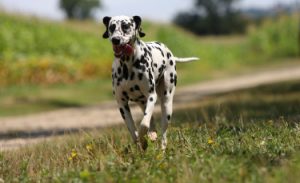
cauda equina syndrome is a particularly disabling disease, especially in large dogs.
cauda equina syndrome includes all symptoms related to the destruction of the nerve roots of the lower back of dogs, In the part of the spinal cord closest to the tail, a so-called horsetail is formed. Cauda equina syndrome in dogs is a series of symptoms caused by the degeneration of a group of nerve roots located in the “cauda equina” region. The latter is mainly located below the spinal cord and in the lumbar spine, sacrum and coccyx.
in general, large dogs are most affected by cauda equina syndrome.
are very unfavorable to dogs with cauda equina syndrome, This condition can cause severe pain and make the animal unable to move normally. In some cases, it can even prohibit any exercise, even mild. Symptoms of
horsetail syndrome. In the early stage of dog
, animals may experience difficulties from supine to standing. Then, he may feel pain in any physical activity and begin to limp. When the dog’s tail is manipulated, it will also feel pain.
in some cases, the dog will incontinence more and more frequently. The nerve that controls the bladder sphincter is also located in the cauda equina.
the main cause of
is the recurrence of cauda equina syndrome in dogs. The reason is:
bone or nerve diseases: tumors and infections affecting the bones or nerves of the lower back. Hip dysplasia: hip dysplasia may contribute to the development of the syndrome by promoting the occurrence of intervertebral disc herniation. Age: the formation of “parrot beak” like bones on the spine of some elderly dogs may lead to nerve damage, leading to horsetail syndrome. This reason is easy to be identified by X-rays. Heredity: some breeds show susceptibility to the disease, including German shepherd, Lowe and golden retriever. Accident: injury may lead to spinal fracture and cauda equina nerve root damage. Treatment and solution
if the above symptoms occur, it is very important to take the dog to the veterinarian as soon as possible, because the diagnosis of cauda equina syndrome is quite complex, and sometimes additional examinations, such as scanners, may be required. Rapid treatment can limit the damage caused by nerve root destruction.
according to the severity of the injury, treatment includes:
Reduce the effect of osteoarthritis and pain on tumor or infection. If this reason is found, surgery: surgery compresses the affected nerve roots and helps the dog move by providing an appropriate seat belt or wheelchair










